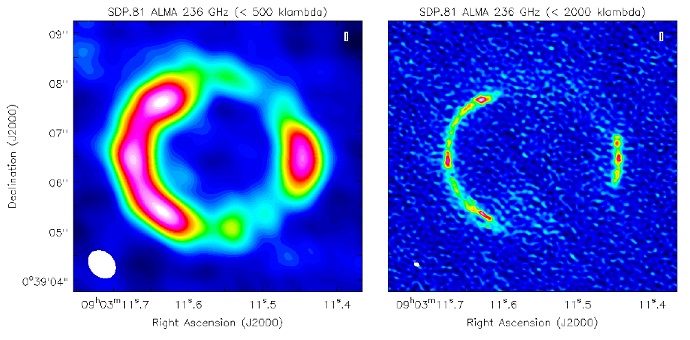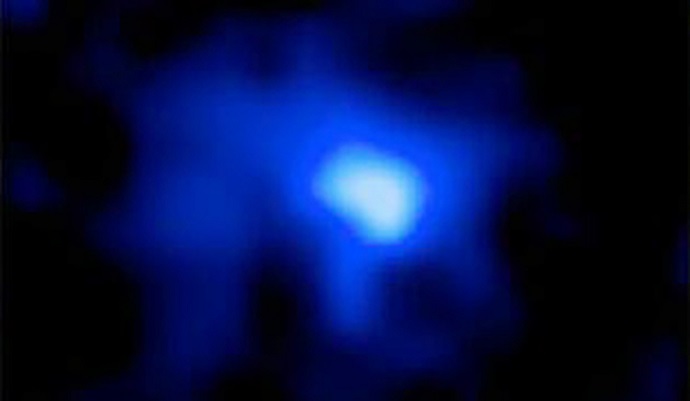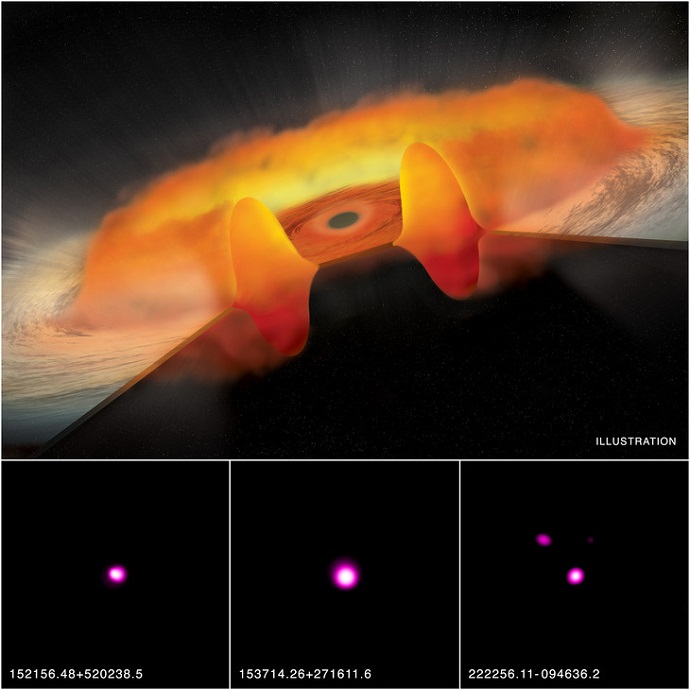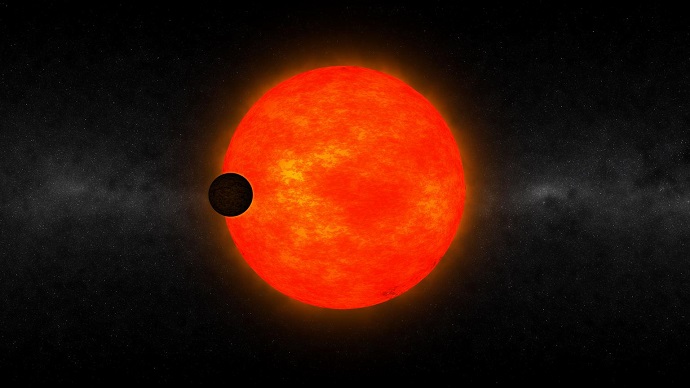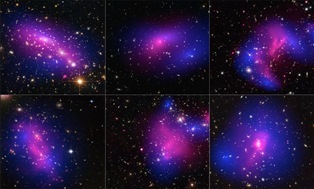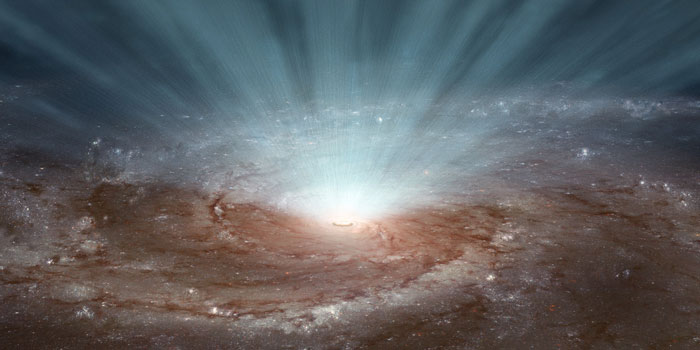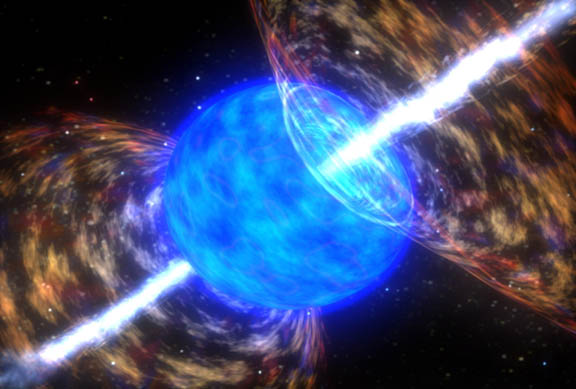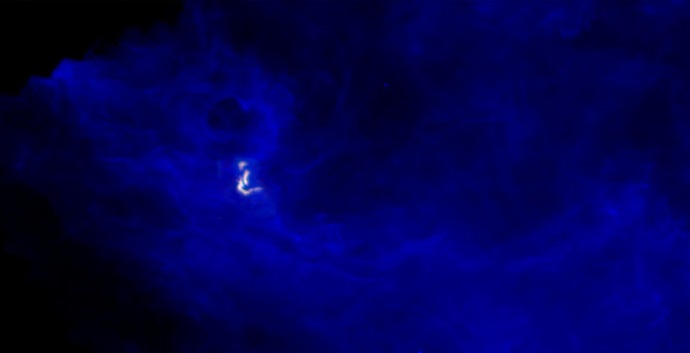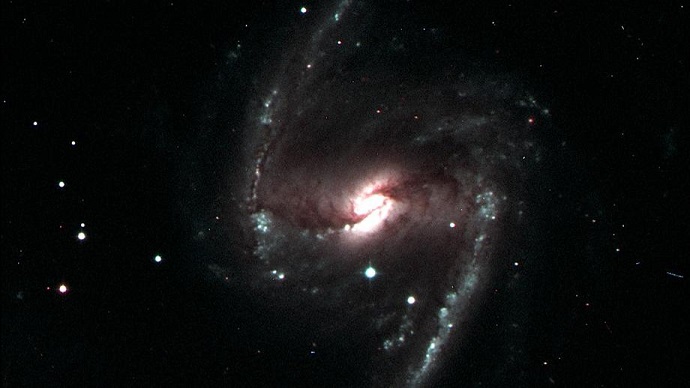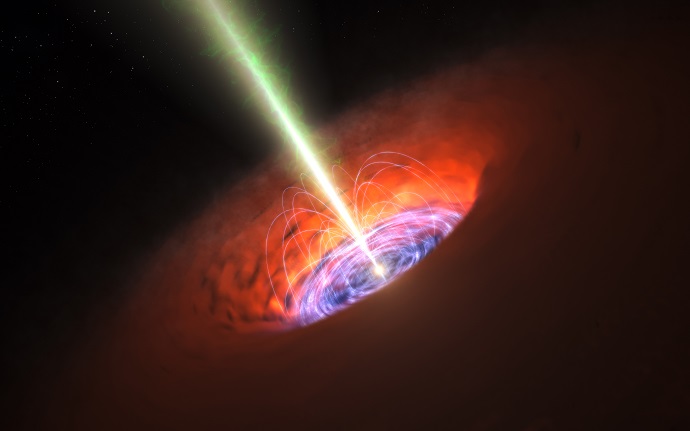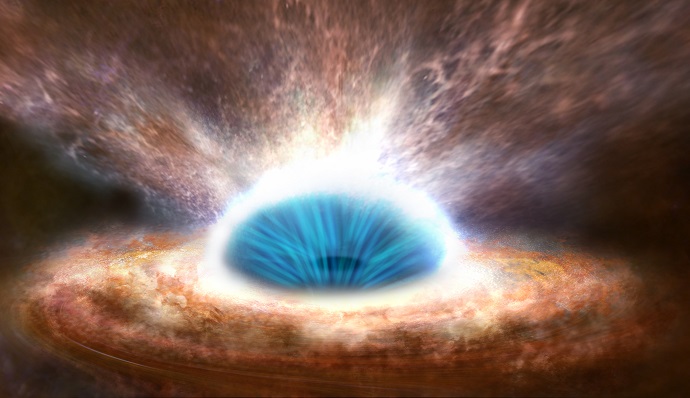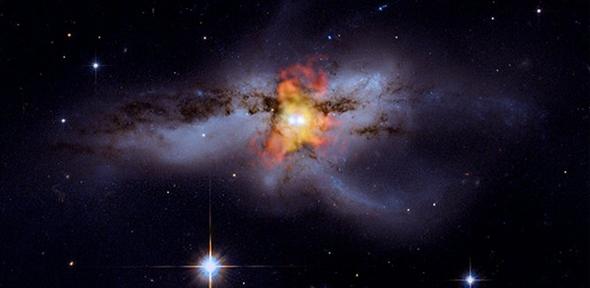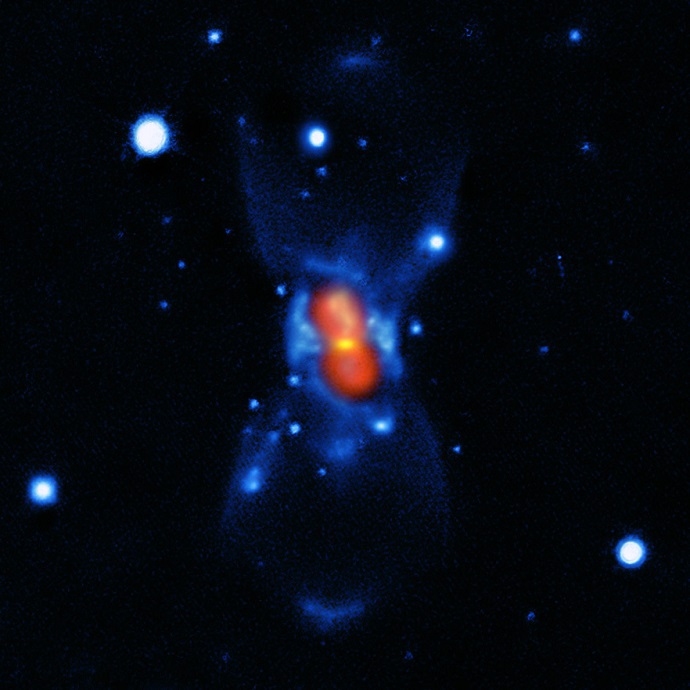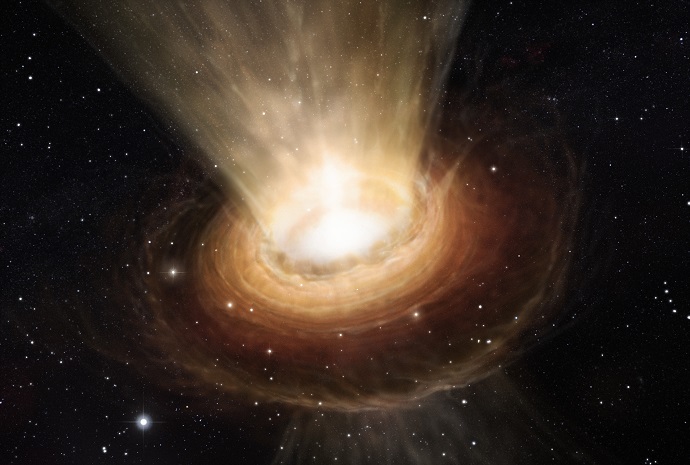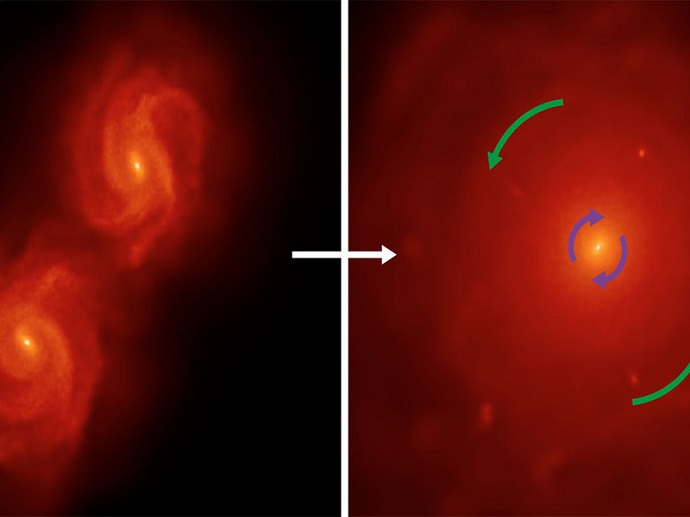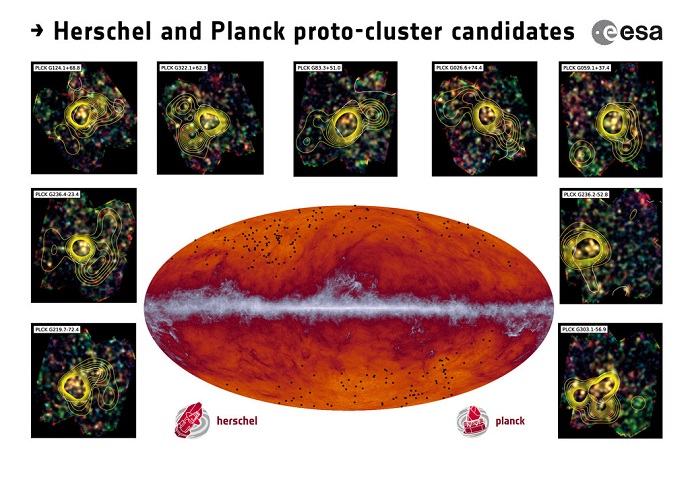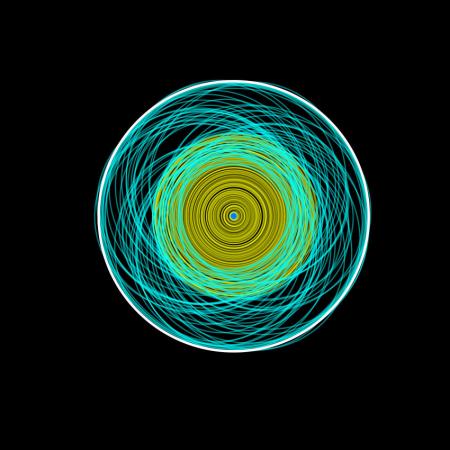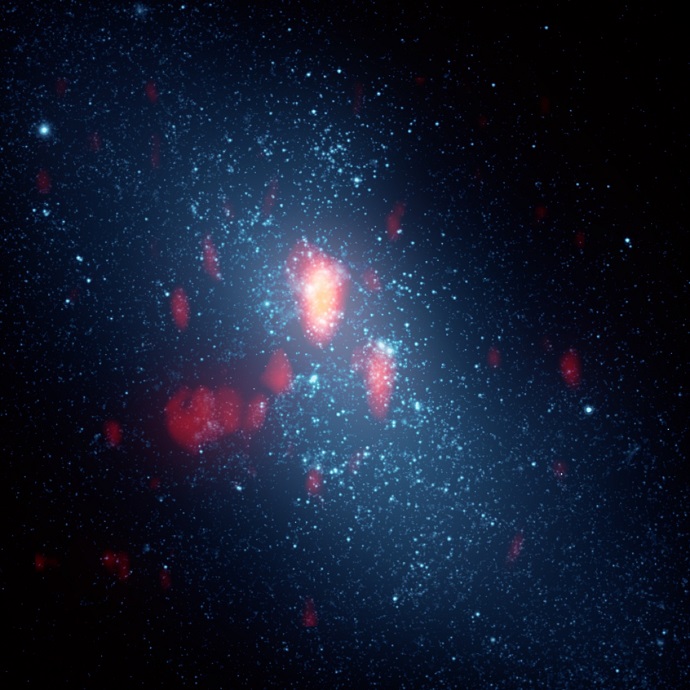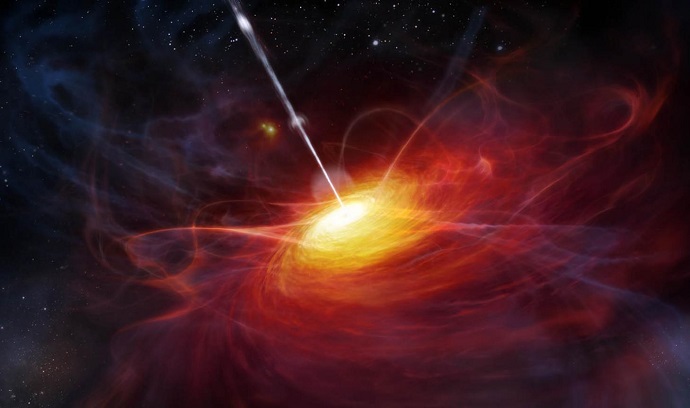
Dusty substructure in a galaxy far far away
Scientists at the Max Planck Institute for Astrophysics have combined high-resolution images from the ALMA telescopes wi…
Read >>Astronomers unveil the farthest galaxy
The team discovered an exceptionally luminous galaxy more than 13 billion years in the past and determined its exact dis…
Read >>Giant gorging black holes may explain rapid growth of infant universe
A group of unusual giant black holes may be consuming excessive amounts of matter, according to a new study using
Read >>Pulsing Light May Indicate Supermassive Black Hole Merger
UMD study reveals more about gravitational dance of two black holes becoming one
As two galaxies enter the final stages of merging, scientists have theorized that the galaxies’ supermassive black holes…
Read >>New exoplanet too big for its stars
The host star of the latest exoplanet, HATS-6, is classed as an M-dwarf, which is one of the most numerous types of star…
Read >>Huge cosmic collisions could help identify dark matter
Dark matter interacts with itself even less than previously thought, narrowing down the options for what this mysterious…
Read >>New discovery sheds light on black holes
An X-ray telescope has, for the first time, observed powerful energy-rich winds emitted from black holes, providing new…
Read >>Gamma-ray bursts as cosmic particle accelerators
Study provides new insights into the universe's most powerful explosions
A new study provides detailed insight into the most powerful explosions in the universe
Read >>Astronomers catch Tatooine multiple star system as it forms
For the first time astronomers, including Dr Richard Parker, of the Astrophysics Research Institute at LJMU, have caught…
Read >>Amateur stargazers find supernovas in distant galaxies
More than 40,000 amateur astronomers have classified two million unidentified heavenly bodies found by the SkyMapper tel…
Read >>Astronomers reveal supermassive black hole’s intense magnetic field
A team of five astronomers from Chalmers University of Technology have revealed an extremely powerful magnetic field, be…
Read >>Supermassive Black Hole Blasts Star-Making Gas From Galaxy’s Core
The galaxy highlighted in the study, known as IRAS F11119+3257, has an actively growing supermassive black hole at its c…
Read >>New insights found in black hole collisions
New research provides revelations about the most energetic event in the universe — the merging of two spinning, orbiting…
Read >>Unravelling the mystery of Nova Vul 1670
APEX and Effelsberg observations explain bright outburst in 17th Century caused by stellar collision
In 1670 a new star appeared in the sky, which could even be seen with the naked eye. It was not a nova, but a much rarer…
Read >>Black holes don’t erase information, scientists say
The “information loss paradox” in black holes — a problem that has plagued physics for nearly 40 years — may not exist
The paper outlines how interactions between particles emitted by a black hole can reveal information about what lies wit…
Read >>The forces that move stars in galaxies
A new mechanism explains the strange orbit of suns in elliptical galactic systems
Elliptical galaxies form when at least two disk galaxies collide with each other and coalesce. Unusual things may happen…
Read >>Galaxy Clusters Formed as 'Fireworks'
By combining observations of the distant universe made with telescopes in Arizona as well as the European Space Agency's…
Read >>New Research Suggests Solar System May Have Once Harbored Super-Earths
Caltech and UC Santa Cruz Researchers Say Earth Belongs to a Second Generation of Planets
Long before Mercury, Venus, Earth, and Mars formed, it seems that the inner solar system may have harbored a number of s…
Read >>More than a million stars are forming in a mysterious dusty gas cloud in a nearby galaxy
UCLA astronomer is part of international team that discovered remarkable star cluster
More than a million young stars are forming in a hot, dusty cloud of molecular gases in a tiny galaxy near our own, an i…
Read >>Astronomers find impossibly large black hole
An international team of astronomers has found a huge and ancient black hole which was powering the brightest object ear…
Read >>
There are 385 articles in Astronomy & Space
Astronomy & Space Archive
